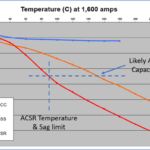According to a 2023 estimate from the U.S. Census Bureau, nearly 45 million Americans over five years old speak Spanish, making it the second-most spoken language by a considerable margin.
To better understand the energy-related needs and interests of Spanish-speaking consumers, the Smart Energy Consumer Collaborative (SECC) recently conducted the “Don’t Leave Us in the Dark: Engaging Spanish-Speaking Households” survey, the latest installment in the Smart Energy Snapshot Series.
The findings from the new survey were compared to previous studies on the U.S. general population from the past year, such as “Customer Satisfaction and the Smart Grid”, “Renewables: Engaging Consumers in the Energy Transition” and others, to assess how Spanish speakers differ.
In this month’s blog, we share three takeaways on Spanish speakers from the new survey:
1. They are more likely to have struggled to pay their electric bills.
In our first-ever Snapshot Survey, we found that a quarter of Americans had struggled to pay their electric bills over the past 12 months, and for consumers making under $50K annually, about one-third said that they had struggled to pay their electric bills. However, running this same question again in the new Snapshot Survey, we found that 37 percent of Spanish-speaking households have struggled to pay their electric bills in the past year, noticeably more than lower-income consumers.
2. They are more supportive of the transition to renewable energy.
The new Snapshot Survey also revealed that Spanish-speaking households are more aware of existing renewable energy targets (from both the government and their electricity providers) and are much more supportive of the clean energy transition compared to the general population. While overall awareness of specific clean energy goals is relatively low, 27 percent of Spanish speakers are familiar with one, while just 16 percent of general population says that they’re familiar with one.
Respondents were also asked how important they think it is that their electricity providers contribute to the goal of 80-percent renewable energy generation by 2030. Among the U.S. general population, 48 percent believe that it should be a high priority, while 32 percent think it should be a medium priority. However, with Spanish speakers, we see this rise considerably to 55 percent who think it should be a high priority and 39 percent that think it should be a medium priority.
3. They are more satisfied with and trusting of their electricity providers.
Despite their struggles to pay their electric bills, Spanish-speaking customers are generally more satisfied with their providers than the U.S. general population. In the “Customer Satisfaction and the Smart Grid” report, the mean satisfaction rating was 7.4 out of 10, with 19 percent of consumers rating their providers a “10”. However, the new Snapshot Survey found a marginal uptick, with a mean satisfaction rating of 7.6 and 21 percent giving their providers a “10”.
When it comes to trustworthiness, there was an even more significant gap between Spanish-speaking consumers and the U.S. general population. Spanish speakers gave their providers a mean trust rating of 7.9 out of 10 compared with 7.3 for the general population. However, it’s worth noting that both samples considered their providers to be highly reliable, with a 7.9 mean reliability score in both instances.
The Spanish-speaking demographic is an important one today for electricity providers, and it will be increasingly important in the years to come. These consumers show strong support for grid modernization and the transition to renewable energy, while exhibiting higher trust levels in their providers compared to the broader population. With effective outreach, either in Spanish or bilingual depending on the context, many of these consumers will be satisfied and engaged customers as we move along the energy transition.




